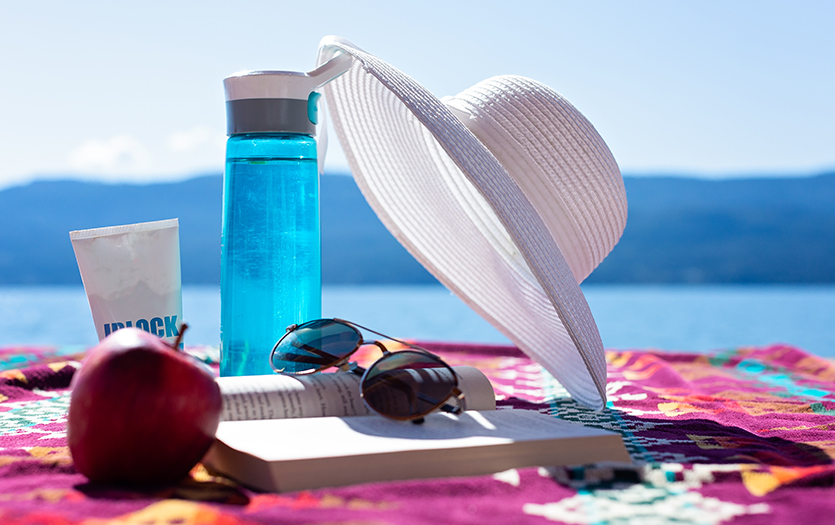
This post was written by Amanda Langan, RDN, nutrition support, Parkview Regional Medical Center.
It's time to clean out the kitchen cabinets and upgrade your pan game. If you own a nonstick pan that has been around for years and has several chips or scratches, it's likely due for a replacement, much a pair of socks with a few too many holes. A well-seasoned cast iron pan, on the other hand, can stick around like a fine wine, improving with age.
With so many options available, it can be hard to know what to choose. To help you get started, we'll break down the various materials, their corresponding cooking methods and when to retire your old pans. We'll also cover important safety measures for coated or nonstick pans.
Choosing the right pan
Not all pans are created equal. Selecting the right one depends on what you plan to cook and your budget. Most of us are familiar with traditional stainless-steel pans, known for their silver coloring and tendency to be challenging to clean if you don't use butter or oil when frying an egg.
On the "flip" side, the coated, nonstick pans appear to be foolproof and require minimal cleaning effort but have raised health concerns in previous years.
Some of us are lucky enough to have inherited a well-used and well-loved cast iron pan from a family member who never washed it for fear of removing the "seasoning."
Beyond these ordinary materials, manufacturers produce pans from aluminum, copper, carbon steel, enameled cast iron and ceramic. Knowing which material works best for your cooking and cleaning style will help narrow down your choices. Here's a closer look at the most common options:
Stainless steel - A pan made of stainless steel can handle high temperatures and is often oven-safe, but make sure the handle can take the heat. These pans are excellent for searing foods, putting a beautiful crust on a steak or quickly sautéing veggies. Stainless steel pans will last a long time but require a bit of elbow grease to clean. They can also be costly depending on the other materials used in making the pan.
Aluminum - Aluminum is a lightweight and more affordable alternative to stainless steel. It is versatile, conducts heat well and heats up quickly. Although these pans can tolerate higher temperatures, they do not retain heat well. Aluminum is often used as the base material when a nonstick coating is applied. These pans are great for everyday cooking but not recommended for searing or placing in the oven.
Copper - These beautiful and expensive pans are most appropriate for someone who spends a significant amount of time in the kitchen. Copper pans conduct heat well and adjust temperature quickly, making them well-suited for ingredients that require low heat when cooking, such as eggy custard or cheese sauce. Gentle care and attention are needed when using and cleaning copper pans to protect the finish. They are not for the novice chef.
Cast Iron - This pan can do it all! It's affordable, durable and great at maintaining heat. Cast iron pans can cook food on a stovetop, in an oven or over an open fire. Their durability means they will be around for a long time, but they are quite heavy and must be seasoned regularly to prevent rust. Enameled cast iron eliminates the need for seasoning and simplifies cleanup.
"Seasoning" involves coating the pan in a thin layer of oil and baking it in the oven at 350°-450°F for an hour, then letting it cool inside the oven. The oil fills the pan's natural microscopic pores, creating a smoother, semi-nonstick surface. This process also happens each time you cook anything with fat or oil. Some cast iron pans come pre-seasoned from the factory.
Note: For a lighter-weight alternative, try carbon steel pans. These can handle high temperatures and heat evenly like cast iron but are dishwasher safe.
Nonstick - A notable characteristic of a nonstick pan is the slick black coating on its surface, often made from Teflon™. These pans can be constructed from various materials, typically aluminum or stainless steel. Nonstick pans are great for cooking at lower temperatures and foods prone to sticking, like eggs, cheese and sauces.
A healthy advantage of using this pan is that it requires less oil or butter when cooking. The key to keeping it in tip-top shape is to avoid heating it above 450°F and using metal utensils. To prevent scratches, opt for plastic or silicon. Nonstick pans are easy to clean but wear out within 1 to 2 years.
Note: Ceramic pans offer similar nonstick features without the health concerns associated with Teflon. They can handle higher temperatures but may scratch or fade over time.
Health concerns of nonstick coatings
Most nonstick pans are covered with Teflon or polytetrafluoroethylene (PTFE), a plastic derivative accidentally discovered in 1938. It has applications in cookware, fabrics and textiles and provides a durable coating for manufacturing. Teflon works well because it repels water and oil and does not react to different foods when cooking, thus your eggs don't stick and slide right out of the pan. However, in 2015, the Environmental Protection Agency (EPA) rolled out a program to eliminate perfluorooctanoic acid (PFOA), an ingredient in Teflon linked to liver, kidney and thyroid disease, some cancers, low birth weights and infertility risks. As a result, manufacturers in the United States no longer use PFOA to produce PTFE for Teflon-coated cookware.
As nonstick cookware ages, it begins to break down and can chip, but ingestion of Teflon coating is not harmful and will pass through the digestive system normally. The real risk comes from overheating Teflon-coated pans. When heated above 570°F, Teflon releases polymer fumes that can cause flu-like symptoms such as body aches, fever, headache, chills and chest discomfort. These fumes are also hazardous to birds, inducing respiratory issues and even death. If you have birds in the house, nonstick cookware made with Teflon may not be your best choice. Replace your pan if you notice chips, scratches, discoloration or signs of overheating (loss of nonstick properties).
Final thoughts
Whichever pans you choose, they are an investment in your cooking experience. Proper maintenance will extend their lifespan, ensuring you enjoy consistent cooking results for years to come. However, no pan lasts forever. Be mindful of appropriate heating temperatures and look for signs of wear, like flaking, discoloration, uneven heating or food sticking to the surface, and replace them as needed to keep your meals healthy and delicious.
Looking for cooking inspiration for your new pans? Check out the Nutrition & Recipes category of our blog, the Parkview Dashboard.



